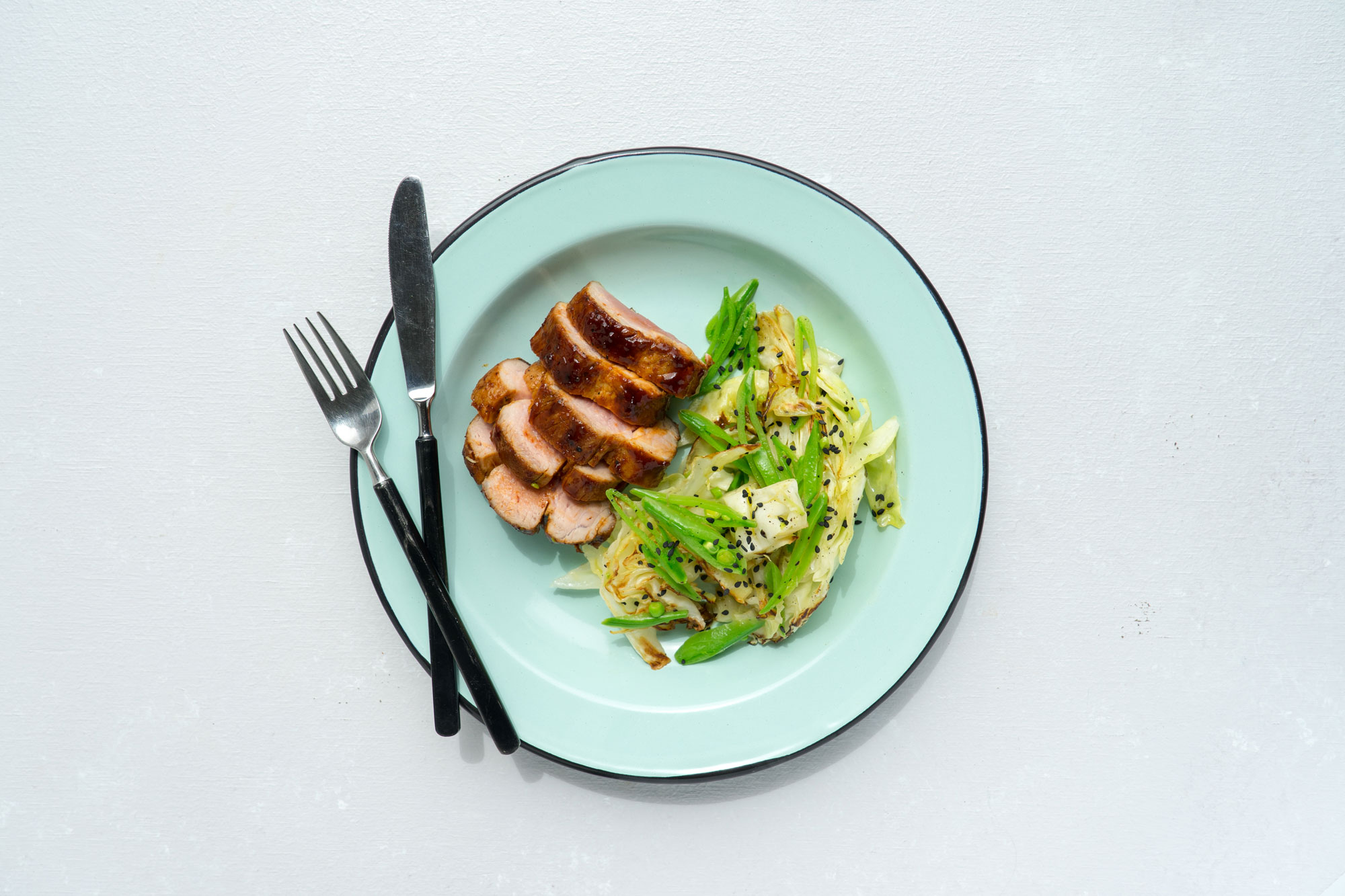Korean Pork Tenderloin + Hot Cabbage Slaw with Peas

Why we love it:
Ingredients
- 1⁄4 cup Gochujang Sauce (from a jar)
- 3 Tablespoons Soy Sauce (divided)
- 1 teaspoon Brown Sugar (or honey, both are optional)
- 1 Pork Tenderloin
- 11⁄2 teaspoons Kosher Salt (divided)
- 2 teaspoons Canola Oil (divided - or use other mild oil)
- 1⁄2 head Savoy Cabbage (or green cabbage. If not making the complementary dish this week, use all of it here)
- 1⁄2 pound Sugar Snap Peas
- 1 Tablespoon Rice Vinegar (unseasoned)
- 1 Tablespoon Black Sesame Seeds (black, white or mixed sesame seeds)
Cooking Instructions
-
1. GLAZE
In a small bowl, whisk together the gochujang sauce, 2 Tablespoons of the soy sauce, and the honey or sugar (if using).
-
2. PORK
Trim any excess fat from the pork tenderloin and sprinkle it with 1 teaspoon of salt on all sides. Sometimes, if the piece is huge and won’t fit in a sauté pan, I’ll even cut it in half.
Heat a large sauté pan over medium high heat and add 1 teaspoon of the canola oil.
When it’s hot and shimmery, add the pork tenderloin in the center of the pan. Once it touches the pan, try not to move it or rearrange.
Let the pork sear on the first side for about 5 minutes. If the pan starts burning, you can turn the heat down a little, but you should see the edges crisping up and turning brown.
After about 5 minutes, roll the pork over a quarter turn, to the next side and cook for another 3 - 4 minutes. Roll again and cook another 3 - 4 minutes.
When golden brown on all sides, transfer the pork tenderloin to a lined baking sheet. Leave the pan on the stovetop but turn off the heat.
Liberally glaze the meat with the sauce, roll it around a little to fully coat - use all of the sauce. Place in the oven and roast for 5 - 10 minutes, the large variation depends on how thick the pork tenderloin you have is and how well you like it done. Medium is perfect for pork - slightly pink in the center - but some may prefer cooked through a little more.
-
3. CABBAGE
While the pork is roasting, slice the core out of the cabbage then slice into 6 - 8 thick wedges. Wipe the sauté pan out with a paper towel, it should hopefully have some pork crispies on the bottom but not be burned.
Return to medium heat and add the remaining 1 teaspoon of oil. Add the cabbage to the pan and let it cook for 4 minutes.
-
4. PEAS
While the cabbage is cooking, stack the peas up and slice them very thinly and on a very drastic angle to make long thin strips. After 4 minutes on the first side, flip the cabbage to the other side then sprinkle the peas on top when you’re ready.
Add the remaining ½ teaspoon of salt to the cabbage and peas. Cook for about 3 minutes, then move things around to gently break up the cabbage and let the peas fall through.
Cook for 1 more minute then add the remaining Tablespoon of soy sauce and the rice vinegar. It will steam and sizzle, cook 1 final minute then top with sesame seeds.
-
5. PLATING
Slice the pork loin into medallions about ⅓” thick. Divide cabbage among plates and add pork on the side.



 (4 votes, average: 4.50 out of 5)
(4 votes, average: 4.50 out of 5)